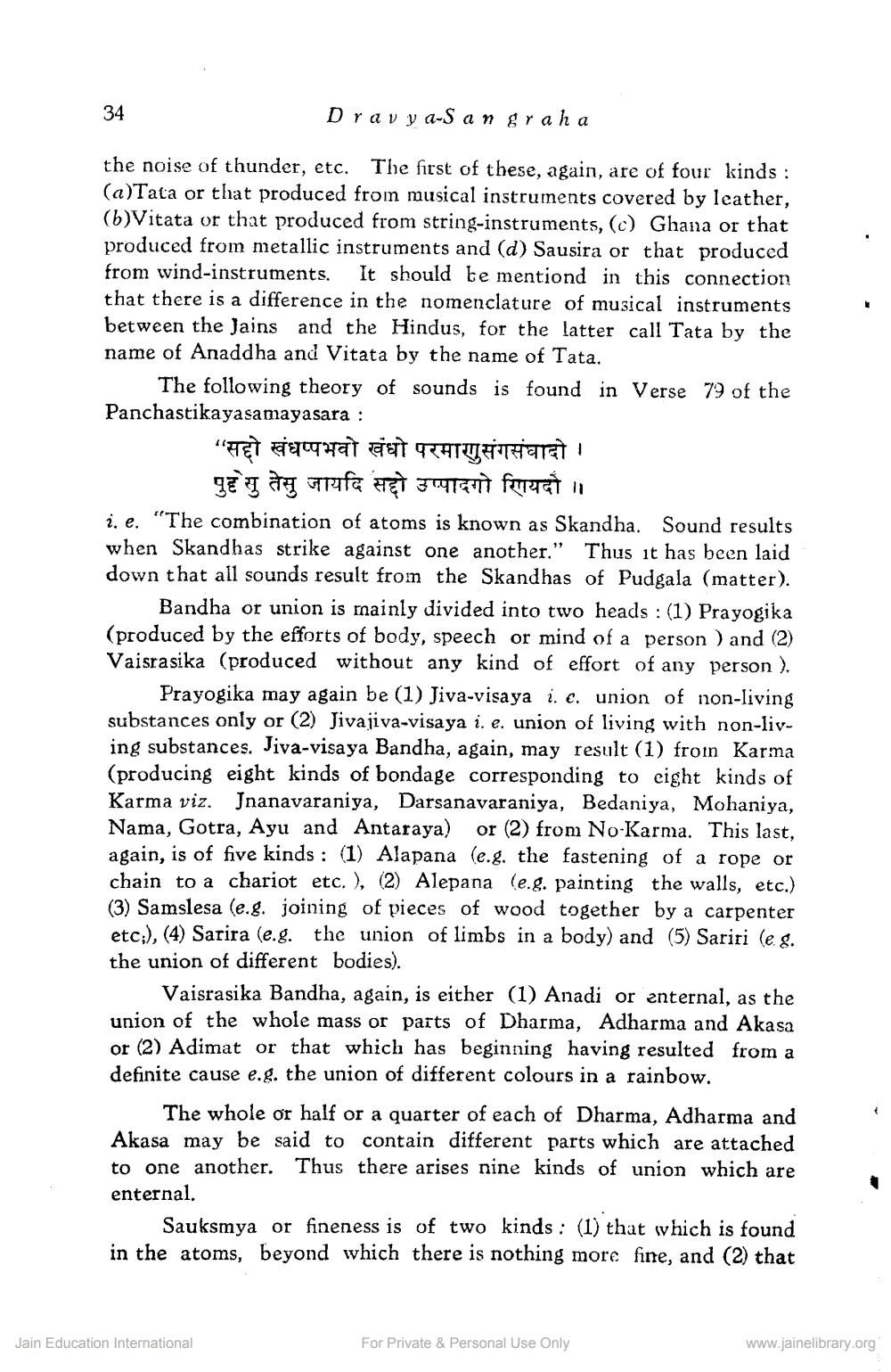________________
34
Dravy a-Sangraha
the noise of thunder, etc. The first of these, again, are of four kinds : (a)Tata or that produced from musical instruments covered by leather, (6) Vitata or that produced from string-instruments, (c) Ghana or that produced from metallic instruments and (d) Sausira or that produced from wind-instruments. It should be mentiond in this connection that there is a difference in the nomenclature of musical instruments between the Jains and the Hindus, for the latter call Tata by the name of Anaddha and Vitata by the name of Tata.
The following theory of sounds is found in Verse 79 of the Panchastikayasamayasara :
"सद्दो खंधप्पभवो खंधो परमाणुसंगसंघादो ।
पुसु तेसु जायदि सद्दो उप्पादगो णियदो । i. e. "The combination of atoms is known as Skandha. Sound results when Skandhas strike against one another." Thus it has been laid down that all sounds result from the Skandhas of Pudgala (matter).
Bandha or union is mainly divided into two heads : (1) Prayogika (produced by the efforts of body, speech or mind of a person ) and (2) Vaisrasika (produced without any kind of effort of any person ).
Prayogika may again be (1) Jiva-visaya i. c. union of non-living substances only or (2) Jivajiva-visaya i. e. union of living with non-living substances. Jiva-visaya Bandha, again, may result (1) froin Karma (producing eight kinds of bondage corresponding to eight kinds of Karma viz. Jnanavaraniya, Darsanavaraniya, Bedaniya, Mohaniya, Nama, Gotra, Ayu and Antaraya) or (2) from No-Karma. This last, again, is of five kinds : (1) Alapana (e.g. the fastening of a rope or chain to a chariot etc. ), (2) Alepana (e.g. painting the walls, etc.) (3) Samslesa (e.g. joining of pieces of wood together by a carpenter etc;), (4) Sarira (e.g. the union of limbs in a body) and (5) Sariri (eg. the union of different bodies).
Vaisrasika Bandha, again, is either (1) Anadi or enternal, as the union of the whole mass or parts of Dharma, Adharma and Akasa or (2) Adimat or that which has beginning having resulted from a definite cause e.g. the union of different colours in a rainbow.
The whole or half or a quarter of each of Dharma, Adharma and Akasa may be said to contain different parts which are attached to one another. Thus there arises nine kinds of union which are enternal.
Sauksmya or fineness is of two kinds : (1) that which is found in the atoms, beyond which there is nothing more fine, and (2) that
Jain Education International
For Private & Personal Use Only
www.jainelibrary.org




